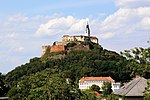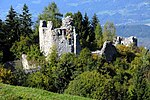.mw-parser-output .hidden-begin{box-sizing:border-box;width:100%;padding:5px;border:none;font-size:95%}.mw-parser-output .hidden-title{font-weight:bold;line-height:1.6;text-align:left}.mw-parser-output .hidden-content{text-align:left}@media all and (max-width:500px){.mw-parser-output .hidden-begin{width:auto!important;clear:none!important;float:none!important))You can help expand this article with text translated from
the corresponding article in German. (July 2009) Click [show] for important translation instructions.
View a machine-translated version of the German article.
Machine translation, like
DeepL or
Google Translate, is a useful starting point for translations, but translators must revise errors as necessary and confirm that the translation is accurate, rather than simply copy-pasting machine-translated text into the English Wikipedia.
Do not translate text that appears unreliable or low-quality. If possible, verify the text with references provided in the foreign-language article.
You must provide
copyright attribution in the
edit summary accompanying your translation by providing an
interlanguage link to the source of your translation. A model attribution edit summary is Content in this edit is translated from the existing German Wikipedia article at [[:de:Burgruine Liemberg]]; see its history for attribution.
You may also add the template ((Translated|de|Burgruine Liemberg)) to the
talk page.
For more guidance, see
Wikipedia:Translation.
| Burgruine Liemberg |
|---|
|
 |
| Type | Hilltop castle |
|---|
|
| Built | 1167 |
|---|
Burgruine Liemberg is a ruined castle in Carinthia, Austria, west of the town of the same name in the municipality of Liebenfels on the steep slope of the Göseberg.
The complex, built in the 12th century, consists of a Romanesque Round tower of about nine meters in diameter, a well preserved Gothic keep and the great hall, which has been remodeled. Due to its small size, this rather unusual castle complex has been largely overlooked.
The outwork built in rocky steps below the castle was adapted as a farm residence and was inhabited until the 20th century.
History
The area around the castle was already used in prehistoric and Roman times. The oldest documented reference to Liemberg dates back to Wolfpertus de Liebenberch in 1167.
There are reports of damage from the Friuli earthquake of 1348. In the 16th century, the castle was given up as a residence after its then owners had Castle Liemberg built at the foot of the slope. Around 1688 Liemberg was described by Valvasor as the "old desolate and deserted castle".







